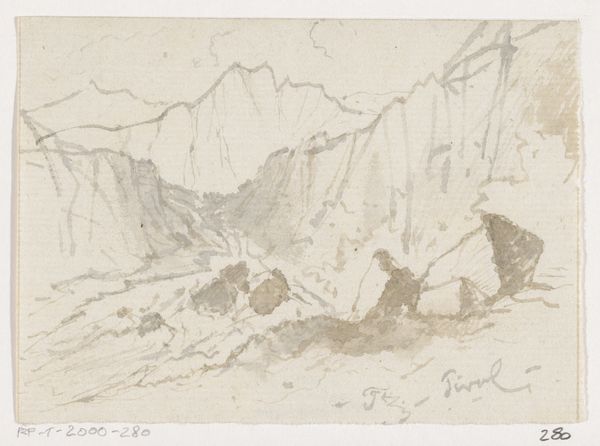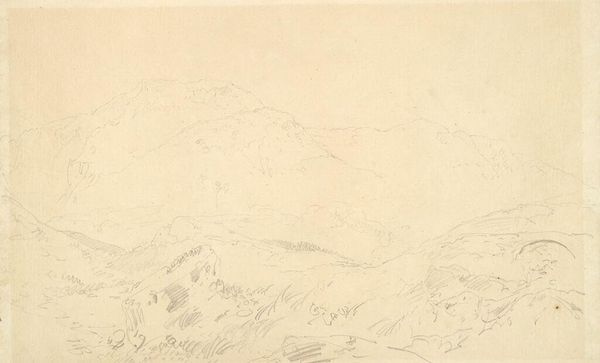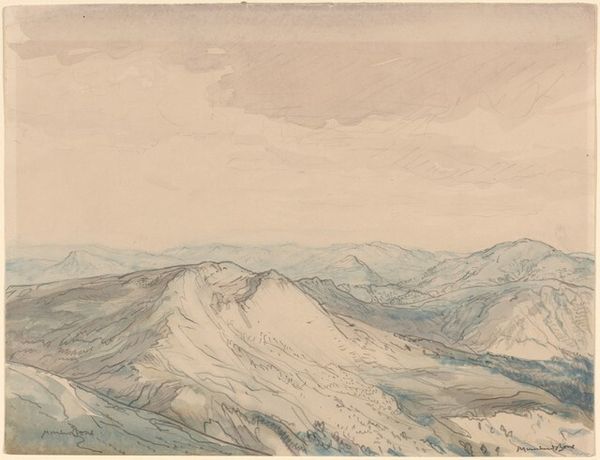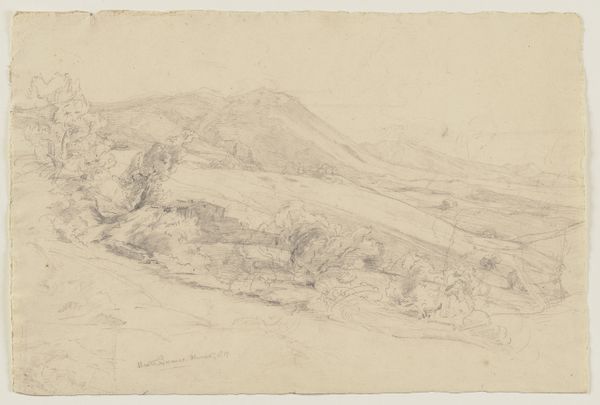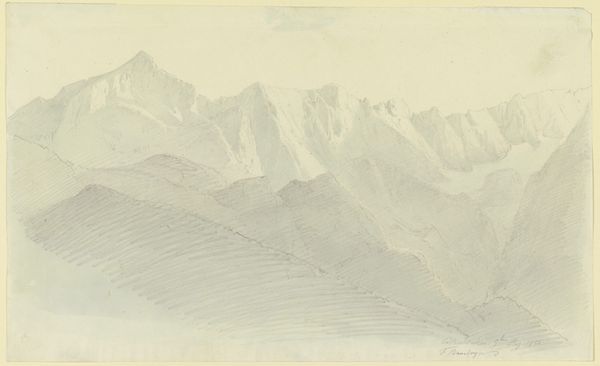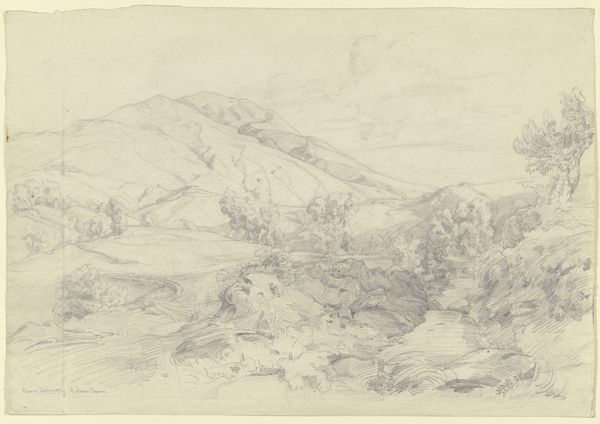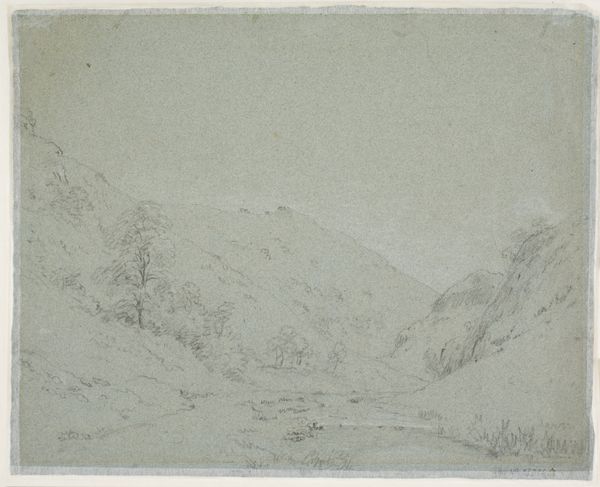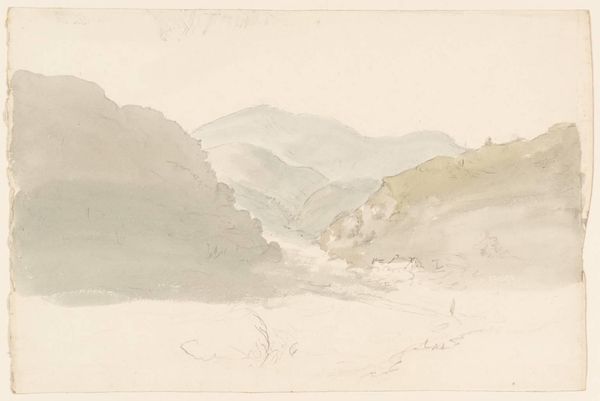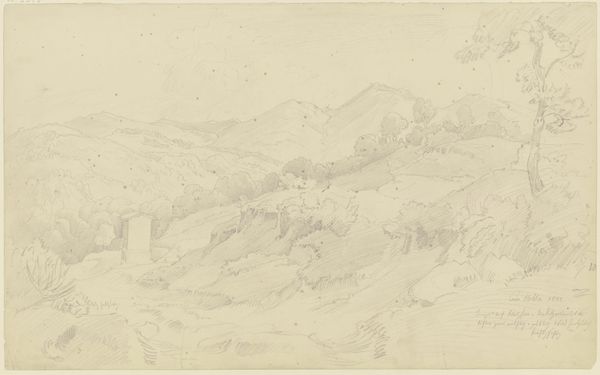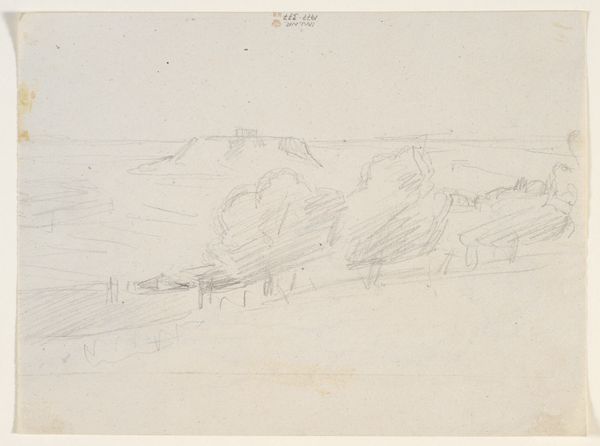
drawing, plein-air, pencil
#
drawing
#
plein-air
#
pencil sketch
#
landscape
#
pencil drawing
#
romanticism
#
pencil
Dimensions: overall: 25.5 x 40 cm (10 1/16 x 15 3/4 in.)
Copyright: National Gallery of Art: CC0 1.0
Curator: My goodness, it's ethereally beautiful, almost spectral. I feel like I could disappear into those soft, silvery slopes. Editor: We’re looking at "Tally Llyn from Llyn Trigrain," a pencil drawing created en plein air by Cornelius Varley in 1803. What's so striking is how such a seemingly simple medium can evoke such a vast, almost overwhelming landscape. Curator: Absolutely. It's interesting; pencil, typically something used for precision, feels so fluid and dreamy here. Like a memory half-forgotten. And look at how he suggests texture in those rock faces – almost vibrating with life, despite the monochrome palette. Editor: Right, and consider the context. The Romantic period prioritized emotion and individual experience of nature, and this image speaks to that sublime encounter. Varley wasn't just sketching a landscape; he was capturing a feeling, an overwhelming sense of nature’s power. The lack of color almost heightens this feeling—it's not about surface realism. Curator: Yes! The Romantic ideal! You know, sometimes I wonder, was it really about "capturing" the feeling, or perhaps offering a humble homage to something so far beyond capture, beyond language itself? Maybe this quiet drawing is itself an act of reverence. Editor: I think it's both. There's undoubtedly a personal interpretation at play here, yet it also taps into broader anxieties and power dynamics within that historical moment. The fascination with landscape also reflects burgeoning national identities, a desire to define territory and ownership, though perhaps Varley isn’t making a pointed claim. Curator: Ownership… yes, it's a sobering thought against the breathtaking vastness suggested by the sketch, isn’t it? How easily that desire for possession creeps into our relationship with something inherently boundless. Editor: And pencil, such a commonplace tool now, was still somewhat novel. Graphite mines only really became central to art practices in the late 18th century. It suggests that he really took that moment seriously, that site meant something to him as a modern artist testing new boundaries of visual representation. Curator: Almost as though he reached for the newest means available to translate what his eyes, his heart, felt... What better metaphor is there, really, for art itself? Editor: Well said. Curator: So, in a way, this little sketch...it's immense. Isn't that just delightful? Editor: Delightful indeed. And an apt reminder of the layers embedded in the act of seeing.
Comments
No comments
Be the first to comment and join the conversation on the ultimate creative platform.
